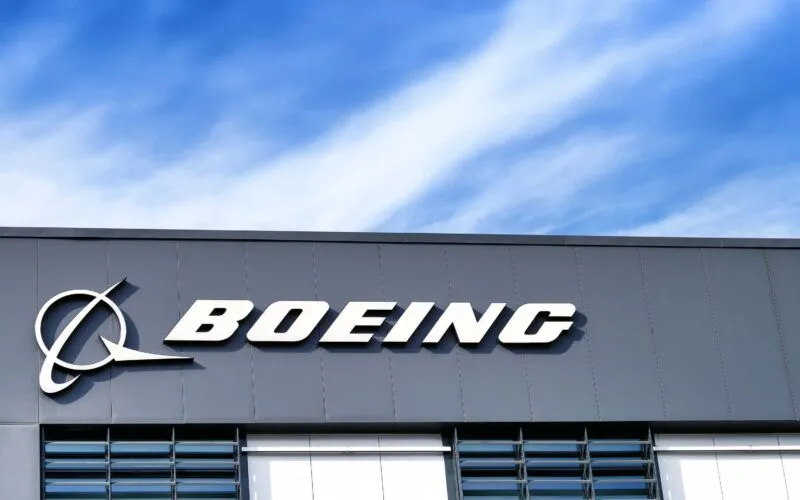
Two More Boeing-Built O3b mPOWER Satellites Successfully Launch, Strengthening SES’s Global MEO Network
Boeing engineers have confirmed the successful launch and initial signal acquisition of the 9th and 10th O3b mPOWER satellites, built for global satellite solutions provider SES. The pair of next-generation satellites lifted off aboard a SpaceX Falcon 9 rocket at 5:12 p.m. Eastern Daylight Time, further expanding SES’s medium Earth orbit (MEO) constellation and enhancing global broadband connectivity.
Approximately two hours after launch, both satellites separated from the Falcon 9’s upper stage and began transmitting signals to ground control. The health status of each satellite is being actively monitored by Boeing’s team at its satellite mission control center in El Segundo, California, home to the world’s largest satellite manufacturing facility.
The newly launched satellites are now embarking on a roughly 130-day journey through space, gradually maneuvering to their target orbital location approximately 8,000 kilometers (about 5,000 miles) above Earth’s surface. This transit is powered by highly efficient xenon-ion propulsion systems, enabling precise and sustainable orbital positioning. Once in place, they will join the eight previously launched O3b mPOWER satellites, which are already in active service delivering high-speed, low-latency connectivity solutions to SES clients around the globe.
Michelle Parker, Vice President of Boeing Space Mission Systems, emphasized the scalable architecture of the O3b mPOWER network:
“We designed O3b mPOWER so each additional satellite beyond the first six boosts capacity, performance, and resilience,” she explained. “This capability stems from our investments in cutting-edge technology and the enhanced production techniques we’ve refined over the course of the program.”
The O3b mPOWER satellite constellation officially began commercial operations in April 2024 and represents a significant technological leap in satellite communications. Positioned in MEO, this advanced system offers near-global coverage, with the ability to reach approximately 95% of the world’s population. Its architecture provides fiber-like performance with lower latency compared to traditional geostationary satellites, all while offering greater geographic flexibility and scalability.
Adel Al-Saleh, CEO of SES, praised the growing momentum of the O3b mPOWER program and highlighted its impact across various sectors and government operations:
“I’m proud of our SES team and partners for continuously pushing the boundaries of what’s possible in space to bring critical connectivity where it matters most. Over the past year, our O3b mPOWER services have been transforming industries and empowering key customers—including telecom operators, cruise lines, airlines, NATO, the Government of Luxembourg, the United States government, and many other allied nations,” he said.
“With this latest launch, we’re adding more capacity to our initial constellation, strengthening our MEO network and enabling scalable delivery of high-throughput, low-latency services globally.”
A standout feature of the O3b mPOWER system is its use of sophisticated software-defined digital beamforming technology. This allows the satellites to adapt their coverage dynamically to address real-time communication demands across different geographies and markets. These digitally steered beams can be reconfigured on the fly to optimize bandwidth distribution and prioritize areas with the highest demand or urgency.
Boeing has hardened this beamforming technology through its work on military satellite systems, including the U.S. Space Force’s Wideband Global SATCOM (WGS)-11 and WGS-12, as well as the Evolved Strategic SATCOM (ESS) program designed for nuclear command and control. This same technology now supports more secure, resilient, and adaptable commercial communications for SES’s customers, making it resistant to jamming, interception, or service disruptions.
The launch of these satellites represents a milestone not just for SES but also for Boeing’s long-term role in redefining space-based connectivity. Boeing remains a key player in the commercial and defense aerospace sectors, building and servicing aircraft, defense systems, and space infrastructure for clients in over 150 countries. The company’s advanced satellite systems contribute directly to expanding global communications networks, supporting defense missions, and enabling humanitarian outreach in underserved regions.
Beyond technical innovation, Boeing maintains a strong commitment to corporate values centered on safety, quality, and integrity. The company supports thousands of employees and partners worldwide, promoting sustainability, economic opportunity, and social impact through its global operations and supply chain.
As the O3b mPOWER constellation continues to grow, SES and Boeing are setting new standards for satellite broadband services—delivering high-capacity, highly reliable, and ultra-low latency connectivity to both commercial and government users. With these two new satellites now on their way to operational service, SES is poised to extend its leadership in MEO-based satellite communications and meet the increasing demand for advanced data services across the world.
In total, SES plans to operate at least 11 satellites in the O3b mPOWER system, creating a backbone for next-generation network connectivity that supports everything from remote healthcare and education to advanced defense applications. The continued success of this collaboration between Boeing and SES underscores the strategic importance of MEO constellations in shaping the future of global communications.




